
Color, 1979, 107m.
Directed by Werner Herzog
Starring Klaus Kinski, Isabelle Adjani, Roland Topor
BFI (Blu-ray & DVD) (UK RB/R2 HD/PAL), Shout! Factory (Blu-ray & DVD) (US RA/R1 HD/NTSC), Gaumont (Blu-ray & DVD) (France R0 HD/PAL), Arthaus (Blu-ray & DVD) (Germany RB/R2 HD/PAL), Anchor Bay (DVD) (US R1 NTSC) / WS (1.85:1) (16:9)
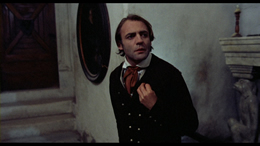
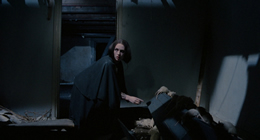 classics were reinterpreted with results including flat-out classics (Invasion of the Body Snatchers, The Thing) and fascinating but divisive experiments (Cat People), but perhaps the most unexpected was director Werner Herzog's interpretation of the F.W. Murnau silent classic Nosferatu. Shot back to back with Herzog's adaptation of the stage play Woyzeck, this film marked the second of five collaborations between the director and his most famous star, the volatile Klaus Kinski. Here the actor disappears into the role of a bald, rat-fanged, desolate member of the undead, a haunting twist on the famous original character embodied by Max Schreck.
classics were reinterpreted with results including flat-out classics (Invasion of the Body Snatchers, The Thing) and fascinating but divisive experiments (Cat People), but perhaps the most unexpected was director Werner Herzog's interpretation of the F.W. Murnau silent classic Nosferatu. Shot back to back with Herzog's adaptation of the stage play Woyzeck, this film marked the second of five collaborations between the director and his most famous star, the volatile Klaus Kinski. Here the actor disappears into the role of a bald, rat-fanged, desolate member of the undead, a haunting twist on the famous original character embodied by Max Schreck. 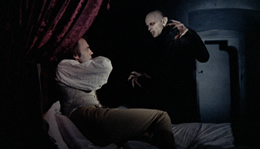 critics were frustrated by Herzog’s attempts to duplicate certain shots from the original silent version; however, time quickly proved to be on the film's side as its reputation quickly grew. The photography is never less than stunning, not surprisingly, and the three leads are all excellent in roles that call for a stylized, dreamlike approach different from the usual demands of the period. Author of the source novel for The Tenant and a key figure in the avant garde Panic Movement, Topor is also an inspired choice as Renfield, and the score by Popol Vuh is also a major, deeply eerie asset.
critics were frustrated by Herzog’s attempts to duplicate certain shots from the original silent version; however, time quickly proved to be on the film's side as its reputation quickly grew. The photography is never less than stunning, not surprisingly, and the three leads are all excellent in roles that call for a stylized, dreamlike approach different from the usual demands of the period. Author of the source novel for The Tenant and a key figure in the avant garde Panic Movement, Topor is also an inspired choice as Renfield, and the score by Popol Vuh is also a major, deeply eerie asset. 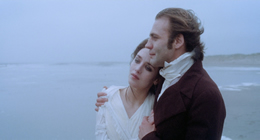 Some confusion arose upon its initial release due to the existence of two versions, a 107-minute German language print with English subtitles shown in some major cities and a wider release English language edition released by Fox, running nearly ten minutes shorter and marketed to compete with other high-profile vampire films that same year like John Badham's Dracula and Love at First Bite. The latter was actually shot in English with the same actors, and its relatively quick disappearance from theaters led to rumors that the stilted line delivery was drawing laughter from audiences.
Some confusion arose upon its initial release due to the existence of two versions, a 107-minute German language print with English subtitles shown in some major cities and a wider release English language edition released by Fox, running nearly ten minutes shorter and marketed to compete with other high-profile vampire films that same year like John Badham's Dracula and Love at First Bite. The latter was actually shot in English with the same actors, and its relatively quick disappearance from theaters led to rumors that the stilted line delivery was drawing laughter from audiences. 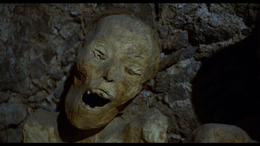 shooting in Delft (which subsequently had a nasty rat problem because of the film), and a typically insightful Herzog commentary moderated by Norman Hill, covering everything you could want to know about getting Kinski into character and finding the astonishing locations including that dazzling final shot.
shooting in Delft (which subsequently had a nasty rat problem because of the film), and a typically insightful Herzog commentary moderated by Norman Hill, covering everything you could want to know about getting Kinski into character and finding the astonishing locations including that dazzling final shot.